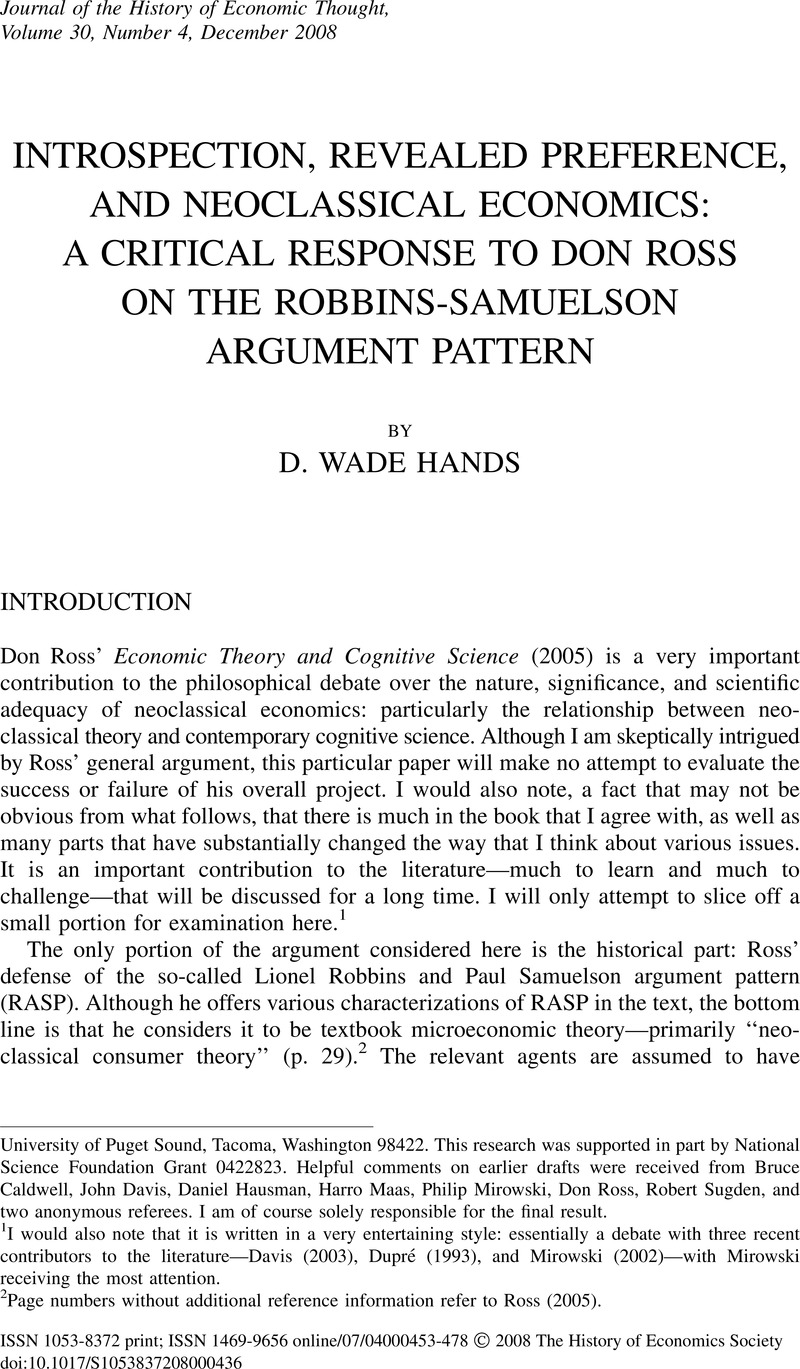Crossref Citations
This article has been cited by the following publications. This list is generated based on data provided by Crossref.
HANDS, D. WADE
2009.
REJOINDER TO ROSS: MORE ON THE ROBBINS–SAMUELSON ARGUMENT PATTERN.
Journal of the History of Economic Thought,
Vol. 31,
Issue. 1,
p.
105.
ROSS, DON
2009.
REPLY TO HANDS: ON THE ROBBINS–SAMUELSON ARGUMENT PATTERN.
Journal of the History of Economic Thought,
Vol. 31,
Issue. 1,
p.
93.
MAAS, HARRO
2009.
DISCIPLINING BOUNDARIES: LIONEL ROBBINS, MAX WEBER, AND THE BORDERLANDS OF ECONOMICS, HISTORY, AND PSYCHOLOGY.
Journal of the History of Economic Thought,
Vol. 31,
Issue. 4,
p.
500.
Fumagalli, Roberto
2016.
Economics, Psychology, and the Unity of the Decision Sciences.
Philosophy of the Social Sciences,
Vol. 46,
Issue. 2,
p.
103.
Grayot, James
2017.
The Quasi-Economic Agency of Human Selves.
OEconomia,
p.
481.
Petracca, Enrico
2020.
Neuroeconomics beyond the brain: some externalist notions of choice.
Journal of Economic Methodology,
Vol. 27,
Issue. 4,
p.
275.
Galbács, Peter
2020.
The Friedman-Lucas Transition in Macroeconomics.
p.
163.
Galbács, Péter
2024.
Why Ontic Structural Realism Does Not Fit Economics.
SSRN Electronic Journal,



